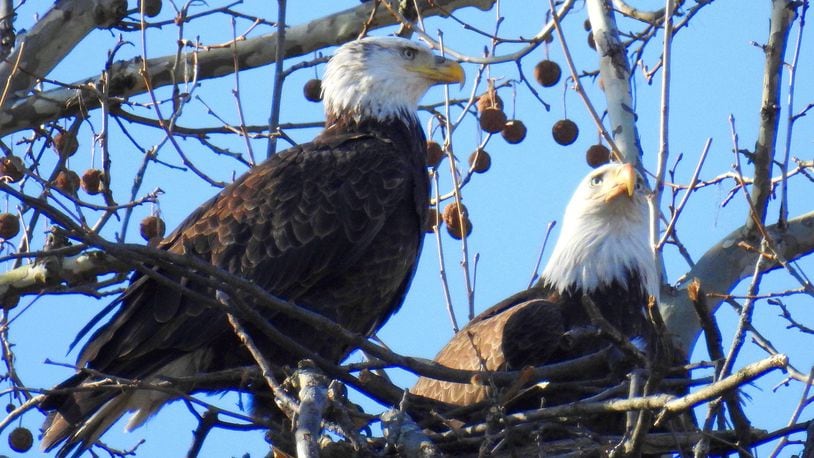However, productivity rates determined from the May survey were much lower than in previous years.
“The number of young per active nest was 0.8, which for the first time since 2009 was below the number of 1 eaglet per nest needed to sustain the population,” the ODNR reported.
Experts blame avian flu, confirmed in the state in March, for the reduction in nest productivity as well as an unprecedented number of eagle deaths throughout northern Ohio in March and April, when several deceased bald eagles tested positive for the disease.
Although just under 48% of nests were successful, nests that did produce young had an average of 1.6 fledglings — a number similar to previous years.
“The bald eagle population has been robust in recent years, and staff remain optimistic that the population will recover from the impacts of avian flu in the coming years,” the ODNR stated.
Among nests in the area is that of Orv and Willa, the bald eagles that took residence in 2018 at Carillon Historical Park in Dayton and have returned each year since. They are named for Wilbur and Orville Wright after they built a nest in a towering sycamore tree behind Wright Hall, home of the 1905 Wright Flyer III. The eaglets each year have been given aviation-themed names.
The bald eagle nests documented in 2022 represents a more than 15% increase from the 707 bald eagle nests recorded in Ohio in 2020, and is a 193% increase from the 281 nests logged in 2012, the year the bald eagle was removed from Ohio’s list of threatened and endangered species.
The bald eagle — the national bird of the U.S. since 1782 — is protected under state and federal law. When viewing them, people must stay at least 100 yards away because disturbing bald eagles at the nest site could lead the pair to abandon their eggs.
Credit: ODNR Division of Wildlife
Credit: ODNR Division of Wildlife
About the Author
